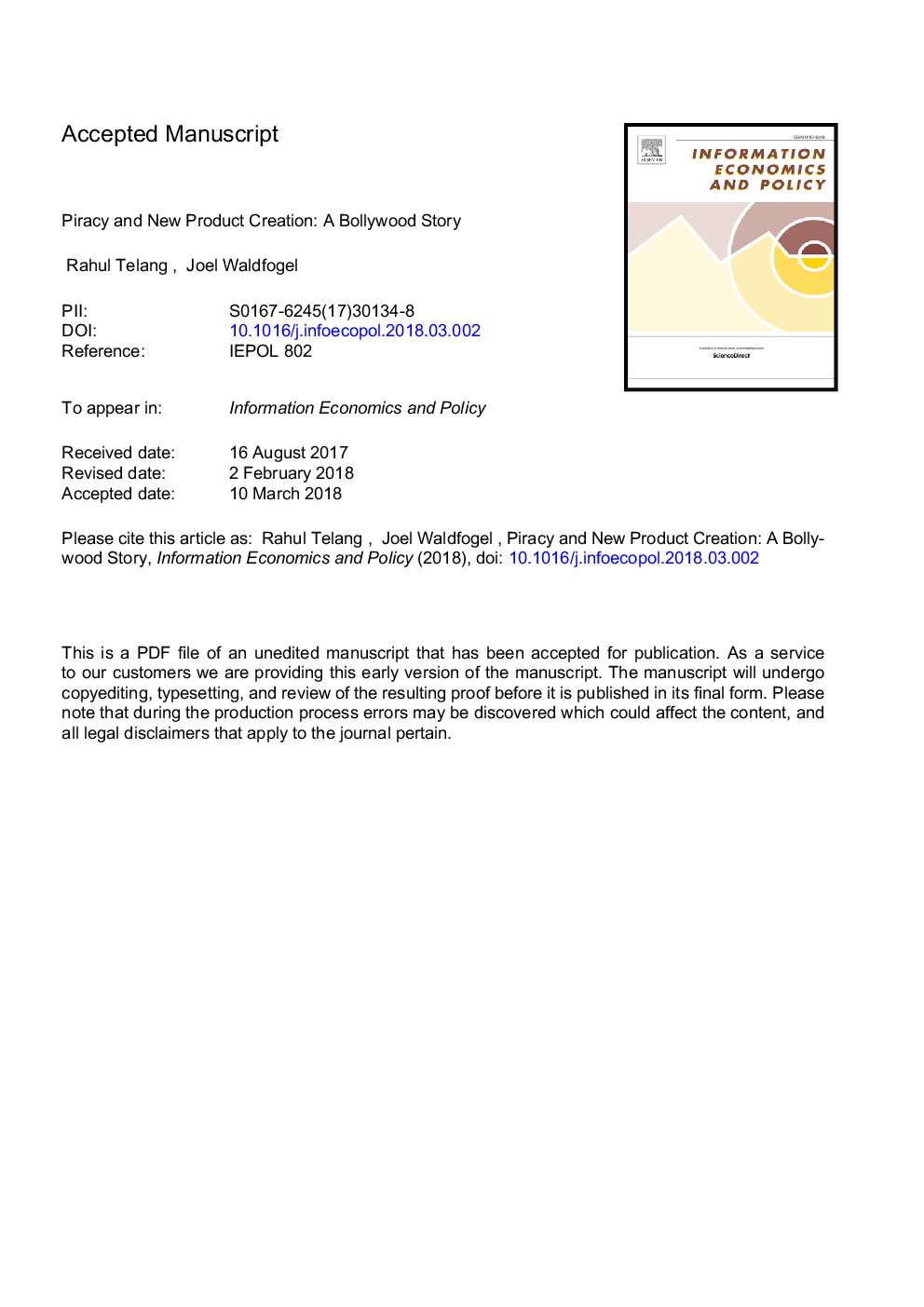| کد مقاله | کد نشریه | سال انتشار | مقاله انگلیسی | نسخه تمام متن |
|---|---|---|---|---|
| 7354356 | 1477167 | 2018 | 41 صفحه PDF | دانلود رایگان |
عنوان انگلیسی مقاله ISI
Piracy and new product creation: A Bollywood story
ترجمه فارسی عنوان
دزدی دریایی و ایجاد محصول جدید: داستان بالیوود
دانلود مقاله + سفارش ترجمه
دانلود مقاله ISI انگلیسی
رایگان برای ایرانیان
کلمات کلیدی
موضوعات مرتبط
علوم انسانی و اجتماعی
مدیریت، کسب و کار و حسابداری
مدیریت فناوری و نوآوری
چکیده انگلیسی
While copyright research in the decade following Napster focused mostly on whether file sharing undermines demand, research has more recently asked how piracy and other aspects of digitization affect the supply of new products. Although revenue has declined sharply, evidence that weakened effective copyright protection undermines creation has been elusive. Instead, because of cost-reducing effects of digitization, the number of new recorded music products - and their apparent quality - has increased. This study examines movie production in India during a period of technological change that facilitated large-scale piracy. The diffusion of the VCR and cable television in India between 1985 and 2000 created substantial opportunities for unpaid movie consumption. We undertake a case study of this episode to shed light on possible impacts of piracy on supply. We first document, from narrative sources, conditions conducive to piracy as these technologies diffused. We then provide strong circumstantial evidence of piracy in diminished appropriability: movies' revenues fell by a third to a half, conditional on their ratings by movie-goers and their ranks in their annual revenue distributions. Weaker effective demand undermined creative incentives. While the number of new movies released had grown steadily from 1960 to 1985, it fell markedly between 1985 and 2000, suggesting a supply elasticity in the range of 0.2-0.7. Thus, our study provides suggestive evidence on a central tenet of copyright policy, that stronger effective copyright protection effects more creation. We contrast our findings with evidence from other contexts.
ناشر
Database: Elsevier - ScienceDirect (ساینس دایرکت)
Journal: Information Economics and Policy - Volume 43, June 2018, Pages 1-11
Journal: Information Economics and Policy - Volume 43, June 2018, Pages 1-11
نویسندگان
Rahul Telang, Joel Waldfogel,
